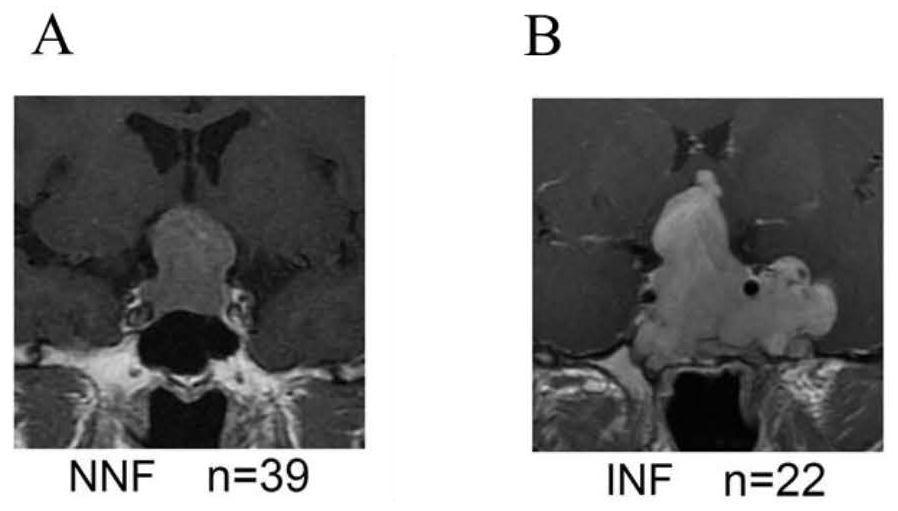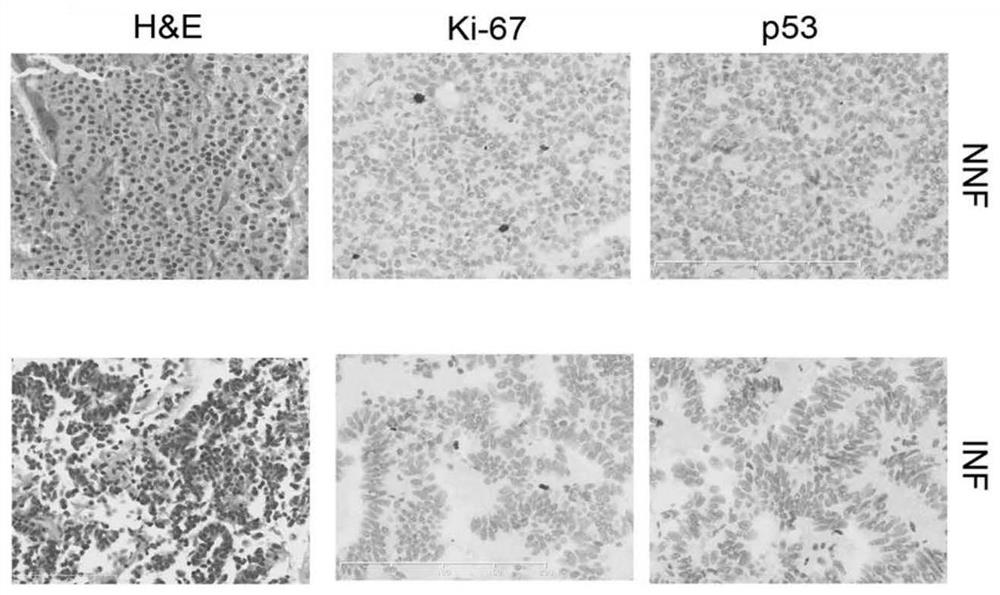Gene combination for distinguishing non-invasive and invasive non-functional pituitary adenomas
A non-invasive, pituitary adenoma technology, applied in the field of biomedicine, can solve the problem of inability to accurately diagnose the invasiveness of non-functioning pituitary adenomas
- Summary
- Abstract
- Description
- Claims
- Application Information
AI Technical Summary
Problems solved by technology
Method used
Image
Examples
Embodiment 1
[0088] Example 1 Screening and verification of genes related to aggressive non-functioning pituitary adenoma
[0089] 1. Sample collection (clinical diagnosis) and study supervision
[0090] Informed consent was obtained from all individual participants in the study. The study recruitment process and protocol were approved by the Peking Union Medical College Hospital Ethics Review Board (No. S-551). Patients who underwent transsphenoidal surgery in Peking Union Medical College Hospital between May 2012 and July 2017 were collected, and their pituitary adenomas were collected. 61 NF-PAs underwent RNA-seq, and 143 NF-PAs underwent TaqMan quantitative RT-PCR and tissue microarray. NF-PAs were diagnosed based on clinical manifestations, hormone tests, and magnetic resonance imaging (MRI). Additionally, immunohistochemical staining was performed for all anterior pituitary hormones and transcription factors to differentiate NF-PA subtypes (Table 1). In this study, all NF-PAs had...
PUM
 Login to View More
Login to View More Abstract
Description
Claims
Application Information
 Login to View More
Login to View More - R&D
- Intellectual Property
- Life Sciences
- Materials
- Tech Scout
- Unparalleled Data Quality
- Higher Quality Content
- 60% Fewer Hallucinations
Browse by: Latest US Patents, China's latest patents, Technical Efficacy Thesaurus, Application Domain, Technology Topic, Popular Technical Reports.
© 2025 PatSnap. All rights reserved.Legal|Privacy policy|Modern Slavery Act Transparency Statement|Sitemap|About US| Contact US: help@patsnap.com



